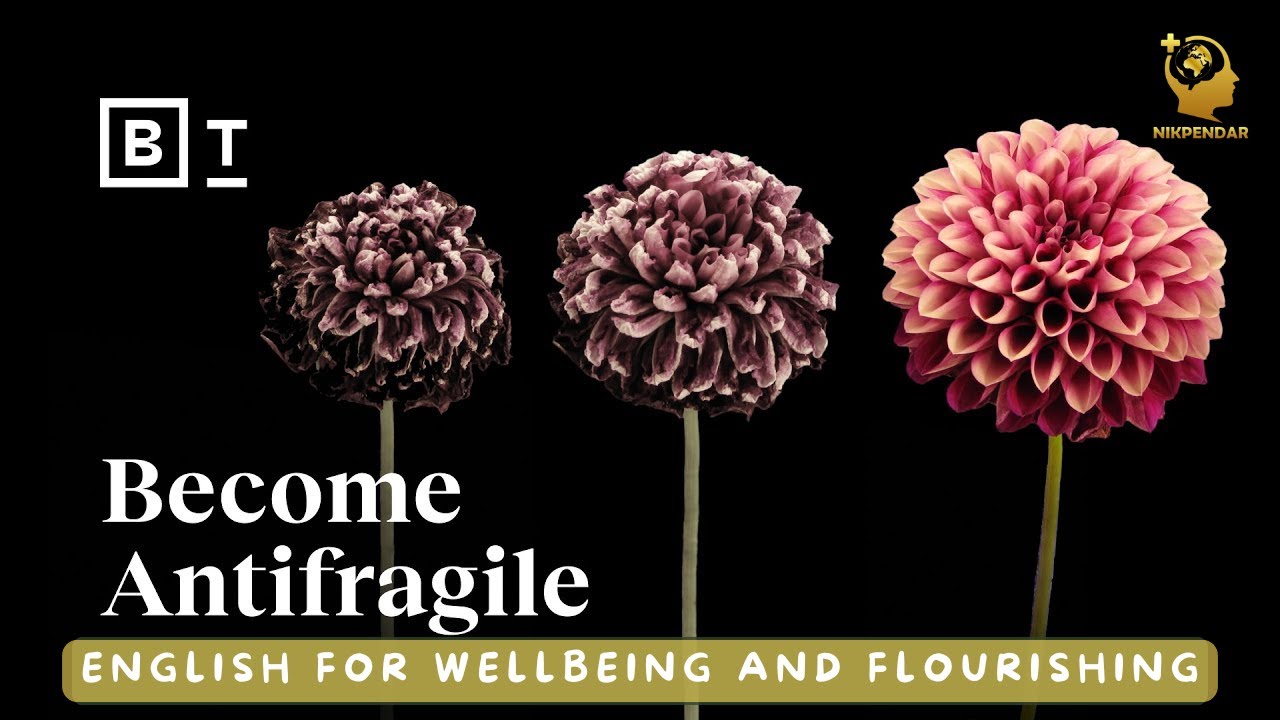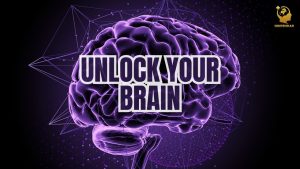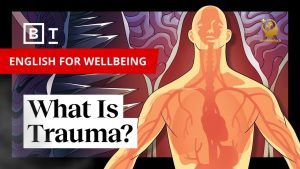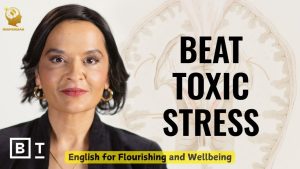
Beginner
Task 1: True or False?
Listen to the first part of the talk (about 1 minute). Are these statements True or False?
- Only psychopaths and dead people feel sad emotions.
- A happy life means you are happy all the time.
- We should try to accept sad emotions.
- The speaker’s name is Tal Ben Shahar.
- His new book is called “Happier, No Matter What.”
Task 2: Simple Questions
Answer these questions using short sentences.
- What are the two kinds of people who do not feel painful emotions?
- What is the speaker’s job?
- What is the name of his newest book?
- What is “antifragility” like? (Is it like “resilience 1.0” or “resilience 2.0”?)
- Give one example of an antifragile system from the talk.
Intermediate
Task 1: Summarize and Explain
Listen to the section about antifragility and post-traumatic growth (PTG).
- In your own words, explain the difference between resilience and antifragility.
- What is post-traumatic growth (PTG)? How is it different from PTSD?
- Why is it important for the science of happiness to study these concepts?
Task 2: Discuss the Paradox
Listen to the part where the speaker talks about the paradox of pursuing happiness.
- What is the paradox? Explain both sides of it.
- How does the speaker suggest we resolve this paradox? Use the sunlight and rainbow analogy to explain.
- Do you agree with his solution? Why or why not?
Task 3: Personal Connection
Choose one of the “colors of the rainbow” from the SPIRE model (spiritual, physical, intellectual, relational, or emotional well-being).
- Describe what that element means in the context of happiness.
- How important is this element to your own happiness? Give an example from your life.
Advanced
Task 1: Analyze and Elaborate
Analyze the concept of antifragility as presented by Tal Ben Shahar.
- Beyond the examples given (muscular system, PTG), can you think of other systems (biological, social, economic, etc.) that demonstrate antifragility? Explain your examples.
- Discuss the implications of understanding antifragility for personal development and societal challenges.
Task 2: Critical Evaluation of the Paradox Resolution
The speaker suggests resolving the paradox of pursuing happiness by breaking it down into its “elements” (the SPIRE model).
- Evaluate the effectiveness of the SPIRE model as an indirect approach to happiness. Are there any potential shortcomings or criticisms you can identify?
- Do you think this indirect pursuit is always superior to a direct one? Consider scenarios where a direct pursuit might be beneficial or unavoidable.
Task 3: Philosophical and Practical Application
The speaker states: “I do not think that things necessarily happen for the best. However, we can learn to make the best of things that happen.”
- Discuss the philosophical implications of this statement in relation to the concept of post-traumatic growth and emotional well-being.
- How can individuals practically apply this mindset to navigate significant life challenges and cultivate overall “wholebeing” as described by the speaker? Provide concrete strategies or examples.
Beginner
Task 1: Listen and Choose
Listen to the recording. Choose the correct answer for each question.
- What are the two kinds of people who do not feel sad emotions? a) Psychopaths and happy people b) Psychopaths and dead people c) Smart people and dead people
- What is the name of the speaker? a) Nassim Taleb b) Tal Ben-Shahar c) Iris Moss
- What is the name of his most recent book? a) Antifragility b) Post Traumatic Growth c) Happier, No Matter What
- When we lift weights at the gym, what happens to our muscles? a) They get smaller b) They grow stronger c) They feel pain
- What can happen if you try to be happy directly (like looking at the sun directly)? a) It can make you happier b) It can hurt your eyes or cause more harm c) It makes you smarter
Intermediate
Task 1: Listen and Fill in the Blanks
Listen to the recording and fill in the missing words.
- There are only two kinds of people who do not experience painful emotions. The first kind are the _______________. The second kind are _______________.
- ________________ is essentially resilience 2.0.
- On the psychological level, when we grow stronger from stress, it’s called PTG, ____________________________________.
- People who say to themselves, “Happiness is important for me, I want to pursue it,” actually end up being ______________ happy.
- The SPIRE model stands for Spiritual, _______________, Intellectual, Relational, and finally, _______________ well-being.
Task 2: Listen and Answer
Listen to the recording and answer the questions in your own words.
- According to the speaker, what is a common false idea about a happy life?
- What is the difference between resilience and antifragility?
- Why is pursuing happiness directly problematic, according to research?
- What is the “silent killer” mentioned in relation to physical well-being?
- What is the number one predictor of happiness?
Advanced
Task 1: Listen and Summarize
Listen to the entire recording. In 3-5 sentences, summarize the speaker’s main argument about how to pursue happiness effectively.
Task 2: Critical Thinking and Discussion
Listen to the recording again. Answer the following questions in detail, supporting your answers with information from the transcript.
- Explain the paradox of pursuing happiness as described by Tal Ben-Shahar. How does he propose to resolve this paradox? Use the analogy he provides to illustrate your explanation.
- Describe the concept of “antifragility” in your own words, providing examples given by the speaker. How does this concept relate to the “science of happiness”?
- Detail each component of the SPIRE model. For each component, explain its significance and any key ideas or warnings the speaker mentions (e.g., about stress or relationships).
Beginner
Task 1: Identify Key Concepts
Instructions: Read the transcript and find the answers to the following questions.
-
- What are the two kinds of people who do not feel painful emotions?
- What is “antifragility”? Is it like being strong and bouncing back, or getting stronger after pressure?
- What are the five parts of the SPIRE model? (Hint: Look for the words that start with S, P, I, R, E)
- What is one important thing for physical well-being that Tal Ben Shahar talks about?
- What emotion is important to cultivate for emotional well-being?
Task 2: True or False
Instructions: Read the transcript and decide if the following statements are True or False.
-
- A happy life means being happy all the time. (True/False)
- Learning to accept painful emotions is part of a happy life. (True/False)
- When we lift weights, our muscles get weaker. (True/False)
- People who are curious and ask questions live longer. (True/False)
- The most important thing for happiness is how much money we have. (True/False)
Intermediate
Task 1: Summarize Main Ideas
Instructions: Read the transcript carefully. Then, write a short summary (3-5 sentences) of the main ideas presented in each section below:
-
- The Paradox of Happiness: Explain why directly pursuing happiness can be problematic.
- Antifragility: Describe what antifragility is and give an example from the text.
- The SPIRE Model Overview: Briefly explain what the SPIRE model is and its purpose.
Task 2: Connect the Concepts
Instructions: Read the transcript and answer the following questions, explaining your answers using information from the text.
-
- How does Tal Ben Shahar explain the difference between resilience and antifragility?
- What is the paradox of pursuing happiness, and how does the speaker suggest resolving it? Use the “sunlight” metaphor in your explanation.
- According to the speaker, why is relational well-being so important for both happiness and antifragility?
Advanced
Task 1: Analyze and Evaluate
Instructions: Read the transcript critically and answer the following questions, supporting your answers with evidence and your own interpretation.
-
- Tal Ben Shahar argues that “learning to accept, and even embrace painful emotions is an important part of a happy life.” Discuss how this idea challenges conventional notions of happiness and what implications it has for psychological well-being.
- Elaborate on the concept of “Post-Traumatic Growth (PTG)” as an example of antifragility. How does this concept shift the perspective from merely coping with trauma to growing from it? Provide specific examples from the text.
- The speaker uses the “sunlight” metaphor to explain the indirect pursuit of happiness. Analyze the effectiveness of this metaphor in conveying the complex idea of how to achieve greater happiness. What are its strengths and potential limitations?
Task 2: Discuss and Reflect
Instructions: After reading the transcript, write a short essay (150-200 words) addressing one of the following prompts.
-
- The SPIRE model outlines five elements for wholebeing. Choose two elements from the SPIRE model that you believe are most critical for fostering antifragility in an individual’s life. Justify your choice with arguments based on the transcript and your own understanding.
- Tal Ben Shahar states, “I do not think that things necessarily happen for the best. However, we can learn to make the best of things that happen.” Discuss this philosophy in the context of embracing painful emotions and post-traumatic growth. How does this perspective empower individuals to navigate adversity?
Beginner
Task 1: Understanding Painful Emotions
Tal Ben Shahar says that only two kinds of people do not feel sad or painful emotions. Who are they? Why is it important to accept painful emotions? Write 3-4 sentences.
- Keywords to use: painful emotions, happy, accept
Task 2: My Favorite Way to Relax
The speaker talks about stress and recovery. What do you do to relax and recover from stress? Write a short paragraph (4-5 sentences) describing your favorite way to relax and why it helps you.
- Keywords to use: relax, recover, stress, happy
Intermediate
Task 1: Antifragility in My Life
The transcript introduces the concept of antifragility, where pressure makes a system stronger. Think about a time in your life when you faced a challenge or difficulty (pressure) and, as a result, you became stronger, learned something new, or grew as a person. Describe this experience and how it demonstrates antifragility.
- Word Count: 100-150 words
- Concepts to include: pressure, grow stronger, challenge, learning/growth
Task 2: The SPIRE Model and My Well-being
Tal Ben Shahar presents the SPIRE model (Spiritual, Physical, Intellectual, Relational, Emotional) as elements of happiness. Choose two elements from the SPIRE model that you believe are most important for your own well-being. Explain why you chose these two and how you actively cultivate them in your daily life.
- Word Count: 120-180 words
- Concepts to include: SPIRE (mention your chosen two), well-being, cultivate, importance
Advanced
Task 1: The Paradox of Pursuing Happiness
Tal Ben Shahar discusses a paradox: valuing happiness directly can lead to less happiness. Explain this paradox in your own words, using the analogy of looking at the sun directly versus the colors of the rainbow. Then, discuss how you can pursue happiness indirectly in your own life, drawing upon concepts from the SPIRE model or other strategies.
- Word Count: 200-250 words
- Key Concepts to address: paradox of happiness, direct vs. indirect pursuit, sunlight/rainbow analogy, application of SPIRE or other strategies.
Task 2: Post-Traumatic Growth vs. Post-Traumatic Stress Disorder
The speaker differentiates between Post-Traumatic Stress Disorder (PTSD) and Post-Traumatic Growth (PTG), linking PTG to antifragility. Analyze this distinction. Discuss the societal implications of focusing on PTG as a potential outcome of hardship, and consider what conditions (as mentioned by Tal Ben Shahar) might facilitate this growth. You may also include a brief personal reflection on how this concept resonates with you.
- Word Count: 250-300 words
- Key Concepts to address: PTSD, PTG, antifragility, societal implications, facilitating conditions, personal reflection (optional).
Sources





